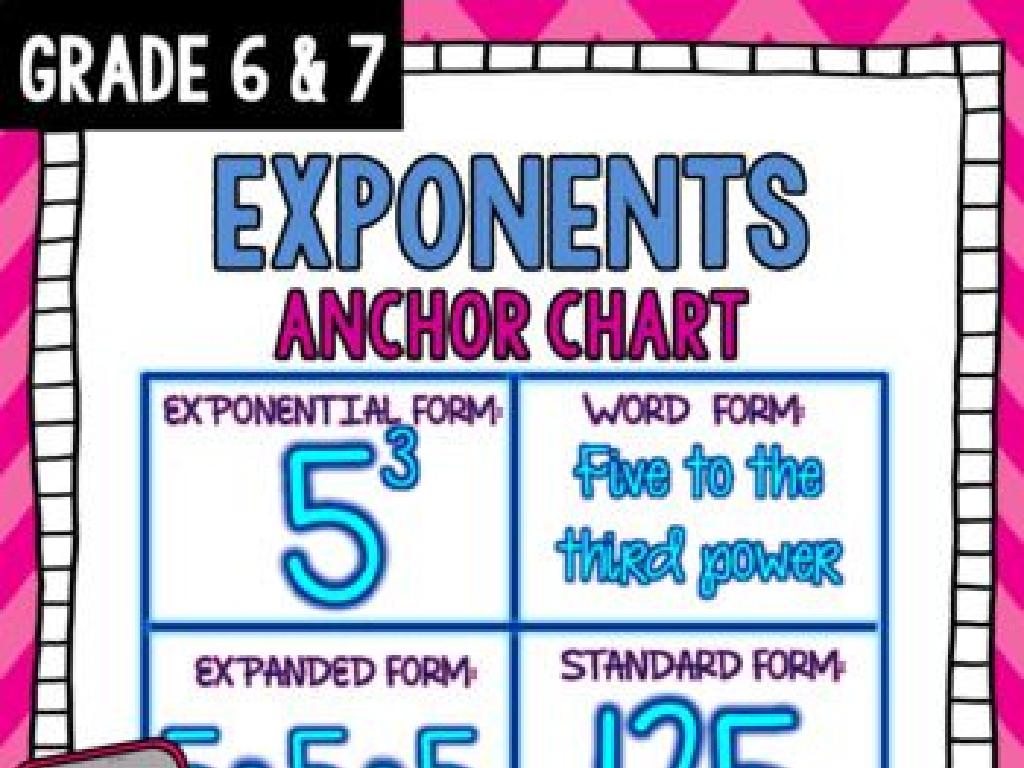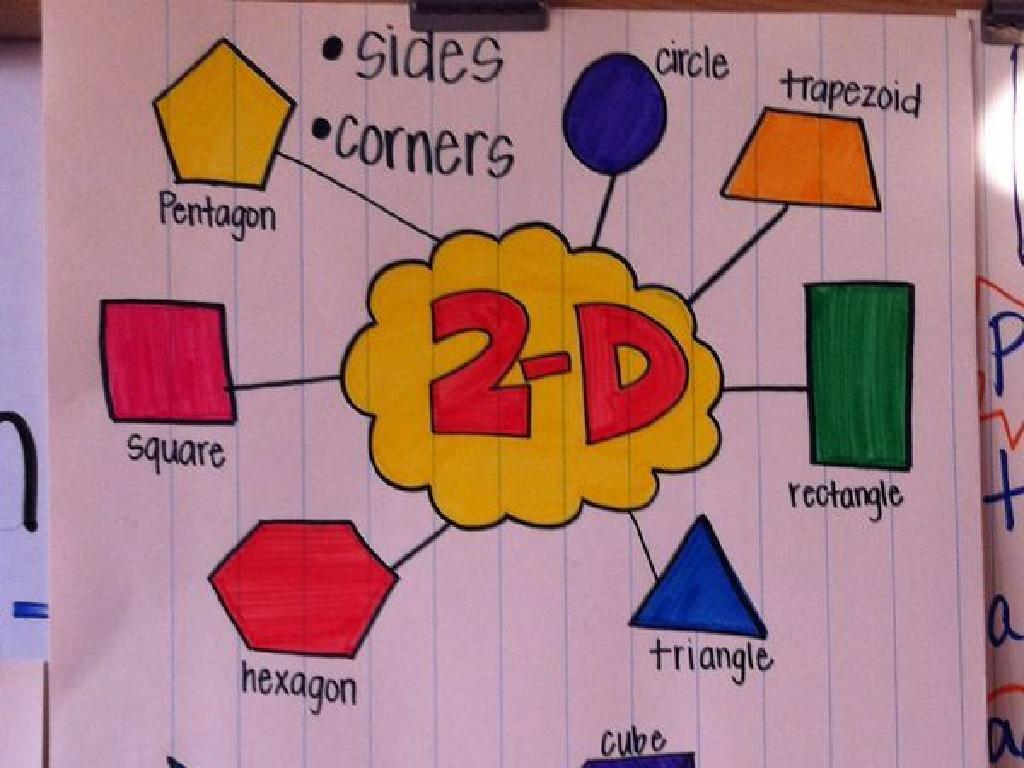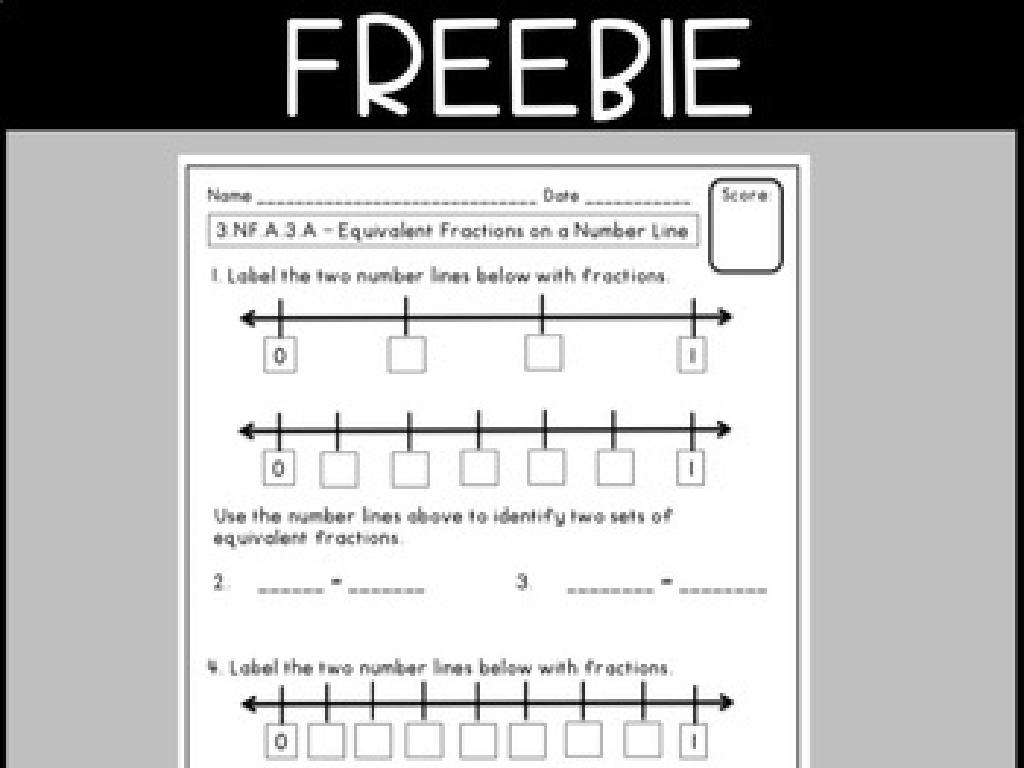Volume Of Cubes, Prisms, And Pyramids
Subject: Math
Grade: Eighth grade
Topic: Surface Area And Volume
Please LOG IN to download the presentation. Access is available to registered users only.
View More Content
Introduction to Volume: Understanding 3D Shapes
– Explore 3D shapes characteristics
– 3D shapes have length, width, and height
– Define volume of 3D objects
– Volume measures space inside a shape
– Discuss the importance of volume
– Volume determines capacity of objects
– Real-world applications of volume
– Used in building, packing, and manufacturing
|
This slide introduces the concept of volume within the context of three-dimensional shapes. Begin by discussing the characteristics of 3D shapes, emphasizing that unlike 2D shapes, they have depth. Define volume as the measure of the amount of space inside a 3D object, which can be thought of as how much ‘stuff’ can fit inside the shape. Highlight why understanding volume is crucial, such as in determining the capacity of containers or the space within a room. Relate the concept to real-world scenarios like construction, where volume calculations are essential for materials estimation, or in everyday tasks like packing boxes. Encourage students to think of examples where they have encountered volume in their lives.
Calculating the Volume of a Cube
– Volume formula: V = s^3
– Example: Cube with 4 cm sides
– If s=4 cm, volume V = 4^3 = 64 cm^3
– Guess the volume of various cubes
– Interactive guessing helps grasp volume concept
– Understanding cube volume
– Volume measures space inside a 3D object
|
Introduce the concept of volume for cubes by presenting the formula V = s^3, where ‘s’ represents the side length of the cube. Provide a clear example by calculating the volume of a cube with a side length of 4 cm, resulting in 64 cm^3. Engage the students with an interactive activity where they guess the volume of cubes with various side lengths to reinforce their understanding of the concept. Emphasize that volume is a measure of the space inside a three-dimensional object and is expressed in cubic units. Encourage students to visualize the cube and the space it occupies to better understand volume. Prepare to facilitate the interactive activity by having a range of cubes with different side lengths available, either physically or virtually, for students to work with.
Volume of Rectangular Prisms
– Volume formula: V = lwh
– V represents volume, l is length, w is width, h is height
– Example: Volume of 5cm x 3cm x 2cm prism
– Multiply length (5cm), width (3cm), and height (2cm): V = 5 x 3 x 2 = 30cm³
– Class Practice: Calculate prism volumes
– Use different prism dimensions to practice volume calculation
|
This slide introduces the formula for calculating the volume of rectangular prisms and provides a clear example for students to follow. The formula V = lwh is a fundamental concept in understanding how to determine the volume of a prism by multiplying its length, width, and height. The example uses small, easy-to-calculate numbers to ensure comprehension. During class practice, provide students with a variety of dimensions for rectangular prisms and encourage them to calculate the volume independently. This activity will help solidify their understanding of the concept. Offer guidance as needed and discuss the solutions as a class to reinforce learning.
Calculating the Volume of Pyramids
– Pyramid volume formula V = 1/3Bh
– V is volume, B is base area, h is height
– Base Area (B) and Height (h) explained
– B is the area of the pyramid’s base
– Example: Square base pyramid volume
– Base 9 cm^2, height 6 cm, volume = 1/3 * 9 * 6
– Practice: Find volume with given B and h
|
Introduce the formula for the volume of a pyramid, V = 1/3Bh, where B is the area of the base and h is the height. Explain that the base can be any polygon, and the height is the perpendicular distance from the base to the apex. Use a square base pyramid as an example to show how to apply the formula. Provide the base area and height, and calculate the volume together. For practice, give students different values of B and h to calculate the volume on their own. This exercise will help solidify their understanding of the concept.
Real-World Applications of Volume
– Everyday use of volume
– Measuring cooking ingredients, filling a pool
– Volume in various professions
– Architects design spaces, Pharmacists measure medicine
– Interactive Q&A on volume
– Significance of understanding volume
– Grasping volume helps in planning and resource management
|
This slide aims to connect the mathematical concept of volume with practical, real-world applications to make it more relatable for students. Discuss how volume is used daily, such as in cooking or when filling up a gas tank. Highlight how professionals like architects, pharmacists, and engineers use volume in their work to design buildings, prescribe medication, or calculate space in cargo shipments. Engage the class with an interactive Q&A session where students think of and share examples where volume plays a crucial role. This will help them understand the importance of volume in everyday life and various careers. Encourage students to consider how an understanding of volume can aid in effective planning and resource management in both personal and professional contexts.
Class Activity: Volume Exploration
– Gather shapes: cubes, prisms, pyramids
– Measure dimensions of each model
– Use rulers to measure length, width, height
– Calculate volume of each shape
– Apply formulas: V_cube = a^3, V_prism = lwh, V_pyramid = (1/3)Bh
– Group presentation of findings
|
This activity is designed to provide hands-on experience with calculating volume. Provide each group with models of a cube, rectangular prism, and pyramid. Students should use rulers to measure the necessary dimensions of each shape. They will then apply the appropriate formulas to calculate the volume: cube (V = a^3), rectangular prism (V = length x width x height), and pyramid (V = (1/3) x base area x height). After calculations, groups will present their findings to the class, explaining the process they used. Encourage discussion about the differences in volume between shapes and the real-life applications of these calculations. Possible activities for different groups could include comparing volumes of different shapes with the same height, exploring the effect of changing dimensions on volume, or calculating the volume of composite shapes.
Review and Homework: Mastering Volume
– Recap volume formulas
Volume of cube (s^3), prism (Bh), pyramid (1/3Bh)
– Homework: Volume calculations
Solve assigned problems to practice
– Complete practice problems
Show work for each problem to ensure understanding
– Discuss homework next class
|
This slide aims to consolidate the students’ understanding of volume calculations for cubes, prisms, and pyramids. Emphasize the importance of memorizing the formulas: volume of a cube (side cubed), volume of a prism (base area times height), and volume of a pyramid (one-third base area times height). Assign a set of practice problems that cover a range of difficulties and encourage students to show their work for each problem to reinforce their understanding. Remind them to bring their completed homework to the next class, where there will be a discussion and an opportunity to address any questions or difficulties they encountered.





